Released 4 years after the EOS R5, the EOS R5 Mark II is equipped with substantial improvements in technology and functionality over the EOS R5. Here’s a closer look at the differences between the two and their impact on your workflow and shooting experience. Here in Part 1, we look at three key aspects of performance: Processing power, AF, and continuous shooting, as well as the batteries.
To learn about how the cameras differ in video features, metering, in-camera post-processing, and connectivity, go to Part 2.

Before we start: What kind of features do the EOS R5 and EOS R5 Mark II share?
Both the EOS R5 and EOS R5 Mark II are mirrorless successors to Canon’s “5” series of all-rounder workhorse full-frame cameras, which are designed for professional photographers, still-video hybrid creators, and advanced enthusiasts shooting across a diverse range of genres.
Both cameras boast:
- A 45-megapixel resolution on a full-frame sensor
- 8K RAW video recording (up to 60p on EOS R5 Mark II and 30p on EOS R5)
- 2 card slots (CFexpress Type B + SD UHS-II slot)
- Native ISO range 100 to 51200
This makes both cameras highly competent, even though the EOS R5 is older. However, the newer EOS R5 Mark II contains many significant improvements over the EOS R5, particularly in terms of speed, autofocus and subject tracking, video features, and functionality.
1. Processing power

Speed is one of the biggest advantages the EOS R5 Mark II has over the EOS R5. It has a new processing structure and core technologies that enable it to process larger volumes of data faster than before, contributing to a faster image sensor readout, swifter and more accurate AF and tracking computation. and faster continuous shooting.
EOS R5 Mark II: Faster sensor readout speeds
Back-illuminated sensor pixel
(EOS R5 Mark II)

Front-illuminated sensor pixel
(EOS R5)

The EOS R5 Mark II uses a newly developed back-illuminated stacked CMOS sensor. On this sensor, the wiring is behind the light-receiving photodiodes, allowing better light-collection efficiency than the conventional front-illuminated sensor on the EOS R5. This results in better image quality with less noise. The stacked structure of the sensor also enables faster readout speeds, which contributes to faster analysis and responsiveness while reducing rolling shutter distortion, among other benefits.
Swifter processing with the Accelerated Capture system

Some features made possible by the new Accelerated Captured system on the EOS R5 Mark II
On the EOS R5, data from the sensor is processed by just one DIGIC X image processing engine. DIGIC X is powerful, being capable of supporting the deep learning technologies that contribute to the EOS R5’s groundbreaking AF performance.
Meanwhile, on the EOS R5 Mark II, DIGIC X is supported by the DIGIC Accelerator co-processor, which helps it analyse and process the rapidly oncoming, large volumes of information from the new back-illuminated stacked sensor. The new sensor, DIGIC X, and DIGIC Accelerator together form the new Accelerated Capture system, which provides the processing speed and power to run the camera’s resource-intensive features even with its expanded AF and deep learning-based functions.
Why this matters?
The new image sensor structure and processing system both support and enable the EOS R5 Mark II’s richer functionality. This is not a minor upgrade: it’s practically an overhaul. In the following points, we will elaborate on the major changes in the EOS R5 Mark II and how they might apply to you.
2. AF and subject tracking performance and functionality

EOS R5 Mark II: Smarter autofocus and tracking
Both cameras use Canon’s unique Dual Pixel CMOS AF layout, where all pixels on the image sensor are capable of both imaging and autofocusing. However, compared to the EOS R5, the EOS R5 Mark II uses deep learning technology for more AF and subject-tracking applications. The improvements are significant enough to warrant a new name: Dual Pixel Intelligent AF. The new system enables faster, more accurate detection of a wider range of subjects, as well as more persistent tracking of subjects even in challenging situations.
AF-related calculations are also faster due to the new Accelerated Capture system, allowing it to keep up with the camera’s faster continuous shooting speed.
Some of the resulting new and improved capabilities are:
- Head area estimation, which keeps the focus on a person’s head even if obstacles like a ball, water splash, or racket are in the way;
- Human upper half body detection (in addition to existing eye, face, head, and full-body detection;
- Better differentiation between tracking subjects and other objects, even when the subject is crossed or blocked.
- Action-priority AF mode, which detects key volleyball, basketball, and soccer actions and automatically shifts the AF frame to the players performing them.
- Register people priority mode, which prioritises specific preregistered people for detection and tracking. This is also available on the EOS R3, but the version on the EOS R5 Mark II is better at tracking people even when their faces change direction frequently.
More intuitive AF control options

Eye Control AF
The EOS R5 Mark II’s Eye Control AF allows users to manually control and switch the focus point with their line of sight when shooting stills. Some users might find this more intuitive than existing AF control interfaces such as the multi-controller (“joystick”), tap to focus, or Touch & Drag AF.
Detect and track subjects even in 1-point or Spot AF mode
The EOS R5 features an older AF operating interface where subject detection and tracking were possible only in automatic selection AF (Face detection + tracking/ Large Zone/ Zone AF) modes. Meanwhile, on the EOS R5 Mark II, subject detection and tracking are available in all AF area modes including Spot AF and 1-point AF, just like on the EOS R3.

When users choose smaller AF area modes like 1-point AF, the AF frame can still detect (“grab”) the nearby subject and track it over the entire image area, even if the subject moves out of the AF area. This also applies for non-human subjects such as birds and motorsports vehicles.
New detectable subjects

As the table above shows, the EOS R5 Mark II can detect subjects not possible with the EOS R5.
See the EOS R5 Mark II’s AF and tracking in action in:
EOS R5 Mark II: A Photo & Video Test in the Boxing Ring
3. Continuous shooting

In the mechanical shutter and electronic 1st-curtain shutter modes, both the EOS R5 and the EOS R5 Mark II shoot at up to 12 fps. However, the EOS R5 Mark II provides a clear advantage in the electronic shutter mode, where it shoots at up to 30 fps compared to the EOS R5’s maximum 20 fps.
The EOS R5 Mark II also boasts improved electronic shutter usability in the form of:
- Up to 40% less rolling shutter distortion
- More user-friendly pre-continuous shooting function
- Support for flash photography in electronic shutter mode
Up to 40% less rolling shutter distortion

EOS R5 Mark II (Electronic shutter)

EOS R5 (Electronic shutter)
The EOS R5 Mark II’s significantly reduced rolling shutter distortion should be encouraging to photographers who were refraining from using the EOS R5’s H+ silent shooting modes because of it.
Other notable features: In electronic shutter mode, enabling the EOS R5 Mark II’s blackout-free display provides an uninterrupted view of a moving subject during continuous shooting.
Pre-continuous shooting with greater flexibility
The pre-continuous shooting function allows users to record up to 15 frames from before they fully press the shutter button, increasing the chances of capturing peak moments in unpredictable, fast-evolving scenes. On the EOS R5, it was available only in RAW Burst mode, which had AF limitations and required users to extract individual frames either in-camera or in the Digital Photo Professional post-processing software.

On the EOS R5 Mark II, there is no RAW Burst mode. Instead, pre-continuous shooting is a standalone mode that becomes available when the shutter mode is set to “Electronic”. You can choose to record in RAW, CRAW, HEIF, or JPEG. AF operation is as usual, and no additional workflow is required to view and export the frames.
Flash photography with the electronic shutter
While flash photography is not available in electronic shutter mode on the EOS R5, it is on the EOS R5 Mark II due to the faster sensor readout. This gives more options for when you need to capture blink-and-you-miss-it moments while using fill lighting or shaping the light.
The EOS R5 and EOS R5 Mark II have the same flash sync speeds in mechanical shutter and electronic 1st curtain modes: 1/200 sec and 1/250 sec respectively. In electronic shutter mode, the EOS R5 Mark II’s flash sync speed is 1/160 sec. The flash sync speeds are slightly faster when shooting in 1.6x crop mode using a Canon EL/EX Speedlite.
4. Batteries

To power its many new features, the EOS R5 Mark II uses the new LP-E6P battery, which supports a high-current discharge with a 6.0A maximum continuous discharge current. It keeps the same shape and 2130mAh maximum capacity as the EOS R5’s LP-E6NH and can be used with an EOS R5 or EOS R6/R6 Mark II with a firmware update.
While the EOS R5’s LP-E6NH, as well as the older LP-E6N, can be used on the EOS R5 Mark II, functionality will be limited. Resource-intensive features such as HDMI RAW output, High Frame Rate movies, pre-continuous shooting, and Dual Shooting will not be available.
Head on to Part 2 to learn more about the differences in video features, exposure metering and in-camera post-processing, and connectivity.








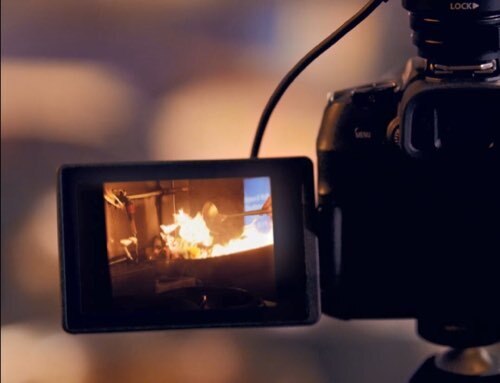



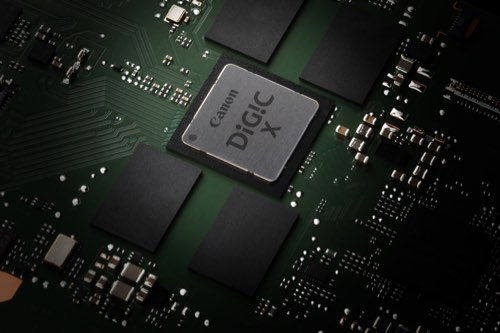








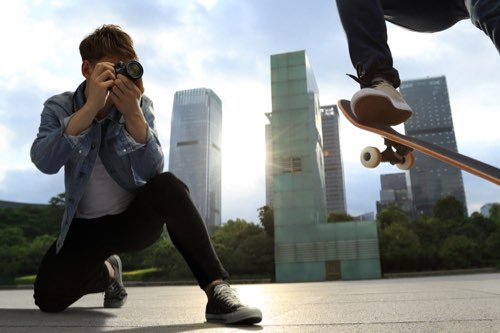
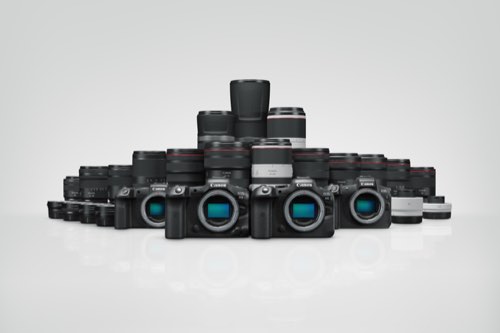







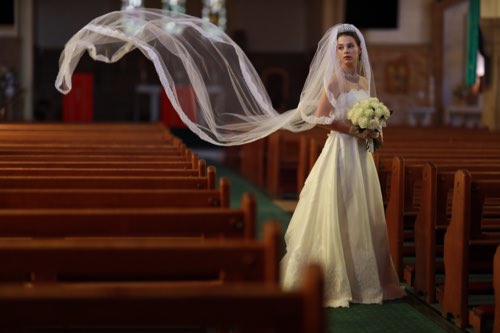
.jpg)



